You’ve Swatched; Now What?
You have your piece of knitted fabric that’s about 4×4″/10x10cm, but what do you do with it? How do you tell if it’s right or if it’s wrong? And then what do you do if it’s wrong?
If you’re swatching in the round, read this blog first.
Mark the Stitches to be Measured
Let’s say your knitting pattern calls for 21 stitches and 30 rows over 4″/10cm in Stockinette stitch.
What? I swear as soon as I start counting stitches, they start dancing in front of my eyes, and I completely lose the ability to keep a tape measure or gauge-measuring device from moving around. Sometimes it feels like there are devious swatch villains trying to mess with me! I’ve tried using a DPN to keep my place, but if I blink, all is lost. With the goal of walking you through this process, I added in measuring lines using scrap yarn, and it made it so much easier for me that I’m adding it to all of my future swatches!
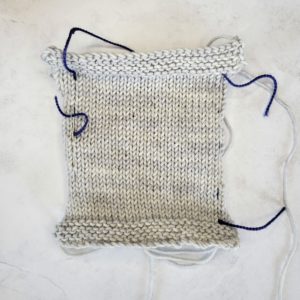
I simply used a tapestry needle to weave in a contrasting color. I used fingering scraps on a DK swatch, but the same weight yarn would work just as well. Don’t use heavier yarn, as it may squish the stitches and change the gauge. I threaded the first scrap just in from the messy edge stitches, then counted out the number of stitches written in the knitting pattern’s gauge directions – 21 in our case – (I counted three times, just to be sure, since the little buggers wouldn’t keep still) and placed the second scrap of yarn there.
If your project has two or more colors, you can use them here to test for color fastness, ensuring that your contrast colors won’t bleed into your main color, or vice versa.
Block Your Swatch
Ugh, are you even serious right now?! This is taking forever! Yes, I’m serious. You’ve already gone to all this trouble, so you may as well forge ahead! The reason for blocking your swatch is two-fold: to help the swatch lie flat for more accurate measuring, and because the wet stitches may actually change in size enough to affect the overall gauge.
This is How I Block
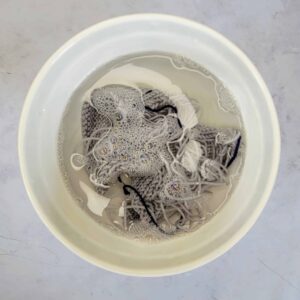
Step 1. Soak the swatch in water with a few drops of a wool wash like Soak or Eucalan (disclaimer: neither company sponsored this post; they’re just what I tend to use). Some knitters are very specific about water temperature (tepid, lukewarm, etc), but I just turn my faucet on and use whatever comes out. In southern areas where the water pipes are above-ground, the water temperature reflects the outside temperature, and comes out of the tap much warmer than in the north, where pipes are buried. I haven’t ever noticed a difference in swatching with these temperature swings; however, I would recommend not using hot water.
Step 2. Gently lift the swatch out of the water and let it drip dry for a few moments. Do not wring the swatch! Or any knitwear, for that matter! Set the swatch down on a dry towel (I just used a clean kitchen towel) and reshape it into a square. (My colors held fast! Yay!)
Step 3. Roll up the towel with the swatch inside (like a Swiss cake roll), gently squeezing to help the towel absorb the majority of the water.
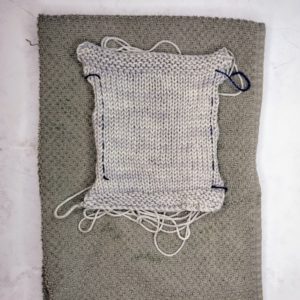
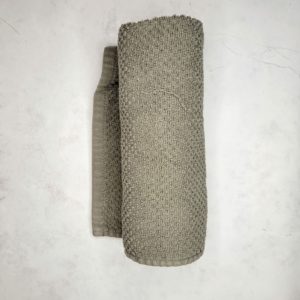
Step 4. While the swatch is still damp, shape it into as perfect a square as you can manage. Look at your stitches and make sure they are in a straight line horizontally and vertically. Try not to stretch or squish – I usually lift up each side and corner a few inches to feel for the yarn’s natural spring and bounce and let the swatch be the size it wants to be. Roughly measure it, noting that this may not be accurate. Let it dry.
*** Intermission ***
This is a good time to knit another swatch if your rough measurement is more than 1/2″ or 1cm from the hoped-for 4″/ 10cm.
Measuring
Measure from yarn scrap to yarn scrap. You can use our beautiful wooden Gauge Gizmo, or a simple tape measure. With luck, it will measure 4″/ 10cm.
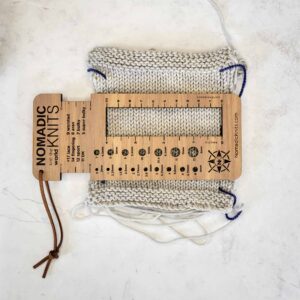
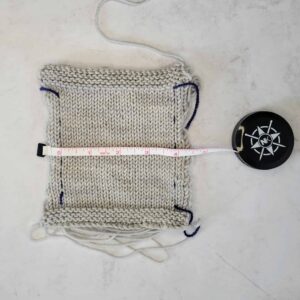
Next, measure vertically. You should be in the neighborhood of 30 rows over 4″/ 10cm, but in many patterns (shawls, most hats, most socks…), the row or round gauge is much less important than the stitch gauge. Why? Scroll down to look at the Lattice Hat – if you have an incorrect stitch gauge (measured horizontally), the hat will not comfortably fit around your head. If you have an incorrect row / round gauge, the hat will still fit the wearer, it’ll just be a little shorter or a little taller than the original. Plus, many patterns call for you to knit to a certain length or height anyway, so the vertical gauge becomes irrelevant.
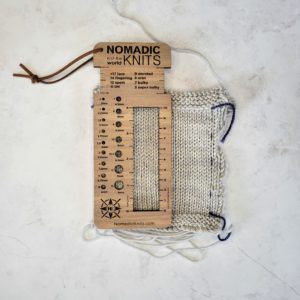
Interpreting Your Measurement
If your 21 stitches measure less than 4″, it means that your stitches are too small, and you need a larger needle.
If your 21 stitches measure more than 4″, it means that your stitches are too big, and you need a smaller needle.
Lattice Hat Knitting Pattern
Gauge: 21 sts and 30 rnds = 4″/10cm.

This is the Lattice Hat (written by me!), included in issue eleven : head over heels. It’s a great knitting pattern for adventurous beginners!
Happy swatching, everyone!
xo
Melissa
Do you swatch? Always? Sometimes? Never? We’d love to know, and we’re not here to judge – we’re full of “oops, I should have swatched” stories!
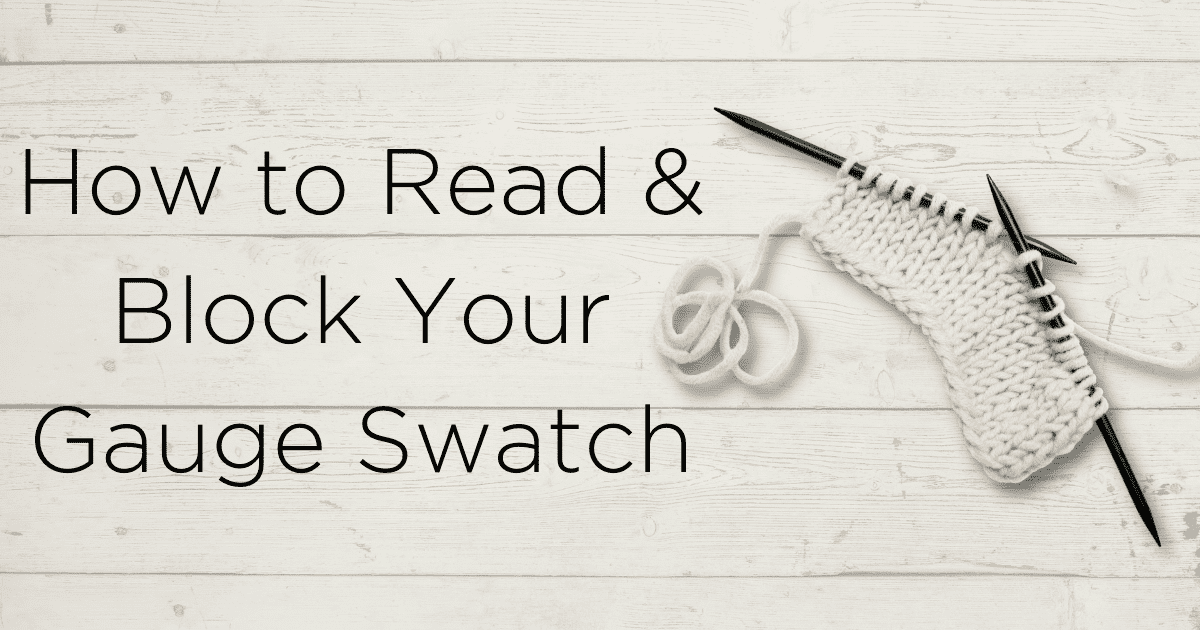
2 Comments. Leave new
I’ve learned (the hard way) to swatch for everything except for blankets, scarves etc. only recently have I started swatching properly for in the round projects (having again learned the hard way – who knew the gauge was so different from flat knitting) !!! 😏
I don’t always swatch. It happens for sweaters but not hats or scarves. Sometimes for a shawl. I hate blocking. I never used to block anything but when I’ve seen the pictures, before and after, I knew I needed to start. Thank you for you “Intermission” it explains a lot. Oh, by the way. I have lived in the South all my life. North Carolina, South Carolina, Florida, Mississippi, and Texas and I have never seen water pipes above ground. I am 75 years old and I was moved in 1963 to Florida. I was 16. We travelled back and forth through the South working with our company. I have never seen what you explained about the pipelines to the houses. I do want to tell you that I enjoy your blog. This one really was informing. Thank you for your time and effort in doing this for us. Take care and stay safe. Linda